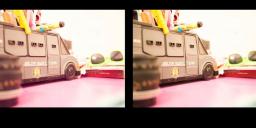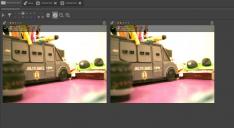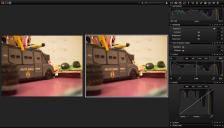
It allows to keep PV going, with more focus towards AI, but keeping be one of the few truly independent places.
-
@yellowapple Have you tried "Reset" in the Setup menu, or any other kinds of camera resets? (maybe there's something in the diagnostics menu?) Did the issue start with firmware 1.1 or did you notice it for 1.0 as well?
-
@yellowapple silly question: do you have i.Dynamic, i.Resolution, electronic shuter, Long Shtr NR and Shading Comp OFF?
I just did a quick (50 shots) TL - Gh3 firmware 1.1, pancake 20mm - all settings manual including the ones in my silly question.
SEEMS adobe camera raw/ lightroom colour shifts the files, pretty much like in your samples (I got shifts from green to magenta) and more visible when applying a 4 Ev boost. BUT, preliminarily, it also SEEMS an adobe issue; capture one, raw developer and even (open source) darktable don't render any of these colour shifts. my batteries are dead so right now not possible to further test TL.
m -
I have already tried resetting the camera (setup>reset), nothing changed. I can't find any other ways for resetting the camera.
I don't remember exactly if this issue was also noticeable with firmware 1.0. I have started using RAW for timelapses only in the last month, before of this I always used .jpg so I can't say it for sure.
In the RAW timelapse tests I have done the setting were: 1) i.Dinamyc OFF 2) i.Resolutuon OFF 3) electronic shutter OFF (I also tried a timelapse with electronic shutter, and the color shift was still there) 4) Long Shutter NR ON (even if on, all the timelapses with the issue have been made with a shutter speed 1/40 or higher, so NR doesn't even activate) 5) I tried both Shading Comp. on and off with no difference
You are right, the colors shifts from green/blue to magenta, and in my tests I have seen that this shift sometimes corrupt lots of images in a time-lapse, sometimes only a few pictures.
I also tried changing "color space" from Srgb to AdobeRGB (rec>Color space), but looks like this has nothing to do with the color shift.
I have tried Capture One anther time, an it looks like that this problem is less noticeable! I will check the RAW files with this application some more time to be sure.
-
I have tried Capture One anther time, an it looks like that this problem is less noticeable! I will check the RAW files with this application some more time to be sure.
though in capture one I checked all profiles, I 99% of times use the linear one
@yellowapple screengrabs of 2 raws, color space adobeRGB and all specs as you but shutter 1/40th sec.
lightroom +4Ev • rawtherapee (open source) + 5Ec • capture one + 4Ev (linear)
 LR.jpg1000 x 466 - 82K
LR.jpg1000 x 466 - 82K
 RT.jpg1093 x 599 - 120K
RT.jpg1093 x 599 - 120K
 CO.jpg1000 x 572 - 95K
CO.jpg1000 x 572 - 95K -
Looking at your pictures, it seems that the color shift reason is releated to the Adobe applications. I can clearly see that your two raws opened and edited in Lightroom have a noticeable difference in color, the right one is more green. I'll try some more comparisons tomorrow to confirm this.
-
Anyone have issues where the camera wont playback files recorded after a still has been shot?
-
I have tested Rawtherapee, Capture One and Apple Aperture with a timelapse in srgb and one in adobe rgb: I can confirm that color shift happens even with these all applications. It looks like that the shift is always noticeable, but depending on the application it's color is different. But, no matter what color is it, the shift ruins every timelapse.
I really don't know what's the reason causing all this trouble. The camera? The applications? This issue is going to make me crazy.
-
I understand, @yellowapple have you tried to phone Panasonic service and check with them, maybe they will tell you how to fix this or what is causing it, or in last case replace your camera. Best Luck
-
@leonbeas, I think you are right, I should try to contact them. I am also interested in understanding if this issue is a common problem or only a problem with my camera or editing. Because of @Maxr tests, it seems that he can replicate this issue too, and this make me think that this could be a common problem for GH3 users. It would be interesting to see if some more GH3 users can replicate the color shift like Maxr did, but maybe not too many of them are interested in using RAW files for timelapse.
-
@yellowapple I use RAW for timelapse. I have not seen any color shifts yet, but I have just gotten started (so not that many shoots yet). I will be on the lookout for the problem in the future. Unfortunately I have to have my GH3 serviced soon after it fell down on its head and the internal flash broke.
PS. I do not use Adobe products BTW. I have FCPX, Aperture, and create the segments with one of Sequence, Timelapse for Aperture, or QuickTime 7, depending on my time of the month.
-
@larsarus I think that for many "common" timelapses this problem may be unnoticeable: the color shift is evident only in underexposed/darker areas, and if you do not need to increase their exposure, you probably won't even notice it (that's the same for landscapes with lots of light). I have done several timelapses in the recent past, but I discovered this problem only after doing timelapses in places with wider dinamic range that needed exposure to bee increased in shady areas.
I am doing some tests now too see if this may be related to specific ISO value.
-
@yellowapple I've been using all variants in dcraw (can't get more basic than developing by code) - see below - and I think you're right... the shifts are clearly there... maybe in previous tests I just mess up...
-w Use camera white balance, if possible
-r "r g b g" Set custom white balance
+M/-M Use/don't use an embedded color matrix
-o "0-5" Output colorspace (raw,sRGB,Adobe,Wide,ProPhoto,XYZ)
-d Document mode (no color, no interpolation)
-D Document mode without scaling (totally raw)
-j Don't stretch or rotate raw pixels
-W Don't automatically brighten the image
-4 Linear 16-bit, same as "-6 -W -g 1 1"m
-
@larsarus also did a time-lapse in raw format with full manual settings, and he has needed to increase exposure in almost dark areas. He got the color shift that makes underexposed areas flickering.
It looks like this is a common problem and not specifically related to my GH3 camera.

 color shift 2.jpg1503 x 289 - 72K
color shift 2.jpg1503 x 289 - 72K -
I was comparing video frames to jpeg, I took a jpeg 2M burst at 20 frames per second. Took out the first 24 frames... size is 12MB, while a second at 24p 72Mb/s (64Mb/s recorded) is about 8MB/s.
I know it's not the same compression but there isn't that much size difference, but the quality difference is impressive.
maybe I maths are off...
Here is a very fast test ALL-I vs 20fps burst ISO 800 same profile
-
I have done another test for the raw color flicker in time-lapse. This time with a slower shutter speed.
-
The GH3 shadows are usually magenta after increasing exposure. The last test shows clearly that the flicker can bee not only green but also blue sometimes.
Someone suggested me to correctly exposing in camera for the shadows and using a grey grad on the sky to make the issue unnoticeable. It may works in some way (I will do some test), but I would like to increase underexposed areas without having this ugly color fliker too.
-
Hi. I wonder if you aren't expecting far too much from the GH3, or any camera, for that matter? You are starting with an essentially black, seriously under exposed image, and then pushing it by, how many EVs? 4 or 5? Do you expect the essentially black initial exposure to respond perfectly well? I think that is too much to expect? I agree the color shifts are pretty bad, but..well...the ROI in the initial exposure is almost black, so, you are amplifying a ROI with almost NO SIGNAL content. I think that is the root of the problem. The post processing tries to boost black to somecolors, but...since the signal content is so low, the huge boost in the exposure is unstable with respect to color balance. Just my take, for what it's worth. As you've said...you only see this issue when you try to correct for grossly underexposed areas in your clips. Maybe you just shouldn't try to push such underexposed areas so hard?
-
JJJ, you may be right, I'm expecting too much maybe.
-
Hi all,
I'm a Toronto-based TV editor. Overall I absolutely love the GH3, and am more amazed by it every day. But...
I'm surprised no one has mentioned spontaneous exposure / gamma shifts in long recordings...? I have two GH3 cameras, and know two other GH3 users here in Toronto, and all four cameras are doing the same thing. Even when the video is set to Manual exposure (which we always do), and even in unchanging studio lighting, the video will abruptly change brightness every minute or two.
The shutter speed, aperture, and ISO do NOT change... yet the recorded video changes drastically from one frame to the next, as if it just jumped an F-stop.
I know that this is not connected to the auto-brightness issue on the rear monitor -- I have tested, and though the brightness shifts look just like the ones that happen when auto-brightness for the rear monitor is on, they do not happen at the same time.
So far, I have been able to cut around the jumps in exposure. However, I know if this isn't fixed, I may miss irreplaceable shots.
Is anyone else experiencing this on long recordings? And if so, do you know a fix?
I'm also very irritated by the screen info disappearing after 10 seconds, as are all of my TV colleagues.
Another question: does anyone use the SmallHD DP-6 monitor with the GH3? If so, have you noticed that the DP-6 crops the video image substantially? Is there any way to fix this? If not, it makes it difficult to use it to assess framing.
Lastly, I Tried the GH3 with the Atomos Ninja-2 and was very disappointed. The GH3's HDMI output when recorded seemed to have a greatly reduced contrast range, and noticeable shift in color and gamma. I don't know if other recorders do better, or if this is a GH3-related issue.
Howdy, Stranger!
It looks like you're new here. If you want to get involved, click one of these buttons!
Categories
- Topics List23,992
- Blog5,725
- General and News1,354
- Hacks and Patches1,153
- ↳ Top Settings33
- ↳ Beginners256
- ↳ Archives402
- ↳ Hacks News and Development56
- Cameras2,367
- ↳ Panasonic995
- ↳ Canon118
- ↳ Sony156
- ↳ Nikon96
- ↳ Pentax and Samsung70
- ↳ Olympus and Fujifilm101
- ↳ Compacts and Camcorders300
- ↳ Smartphones for video97
- ↳ Pro Video Cameras191
- ↳ BlackMagic and other raw cameras116
- Skill1,960
- ↳ Business and distribution66
- ↳ Preparation, scripts and legal38
- ↳ Art149
- ↳ Import, Convert, Exporting291
- ↳ Editors191
- ↳ Effects and stunts115
- ↳ Color grading197
- ↳ Sound and Music280
- ↳ Lighting96
- ↳ Software and storage tips266
- Gear5,420
- ↳ Filters, Adapters, Matte boxes344
- ↳ Lenses1,582
- ↳ Follow focus and gears93
- ↳ Sound499
- ↳ Lighting gear314
- ↳ Camera movement230
- ↳ Gimbals and copters302
- ↳ Rigs and related stuff273
- ↳ Power solutions83
- ↳ Monitors and viewfinders340
- ↳ Tripods and fluid heads139
- ↳ Storage286
- ↳ Computers and studio gear560
- ↳ VR and 3D248
- Showcase1,859
- Marketplace2,834
- Offtopic1,320







